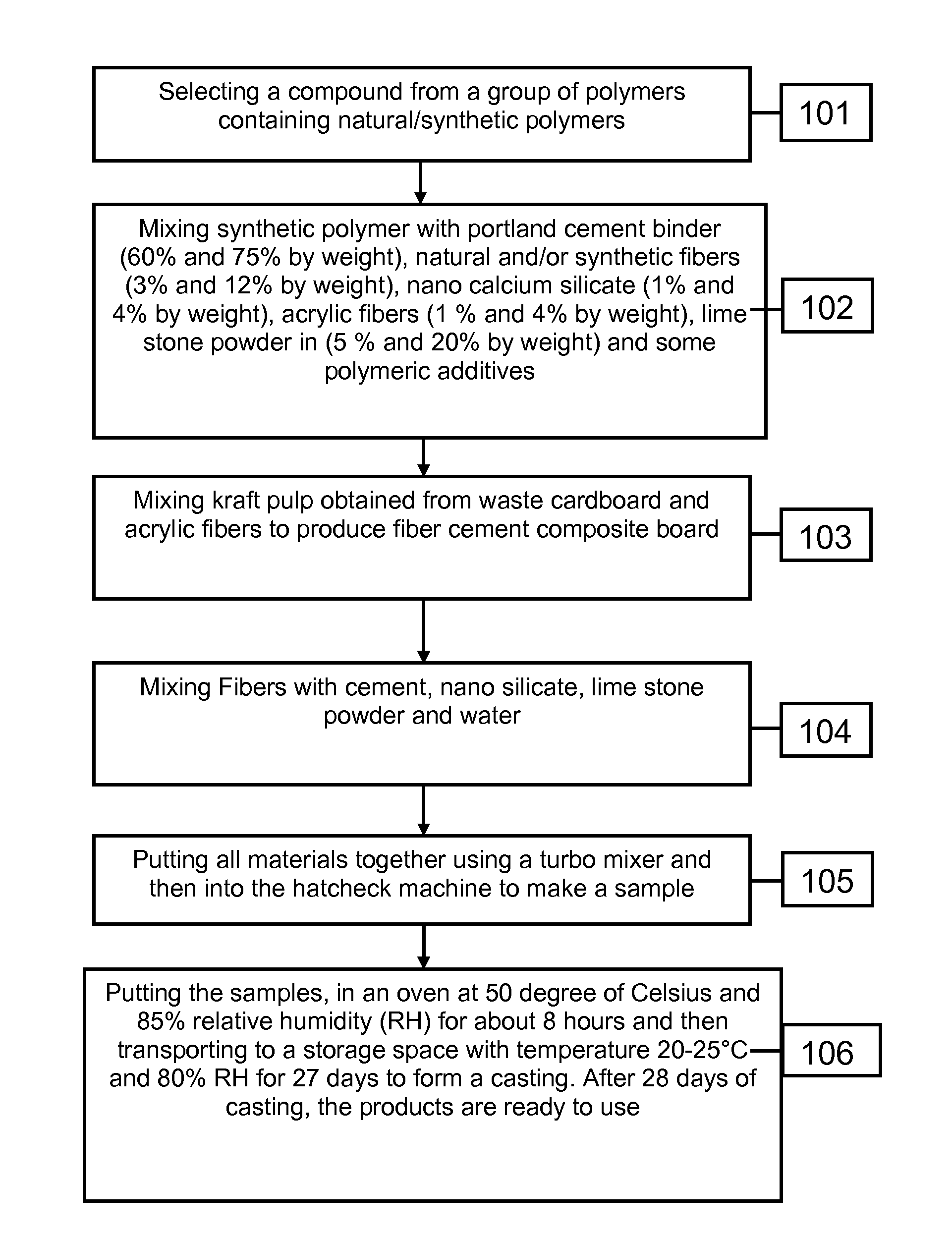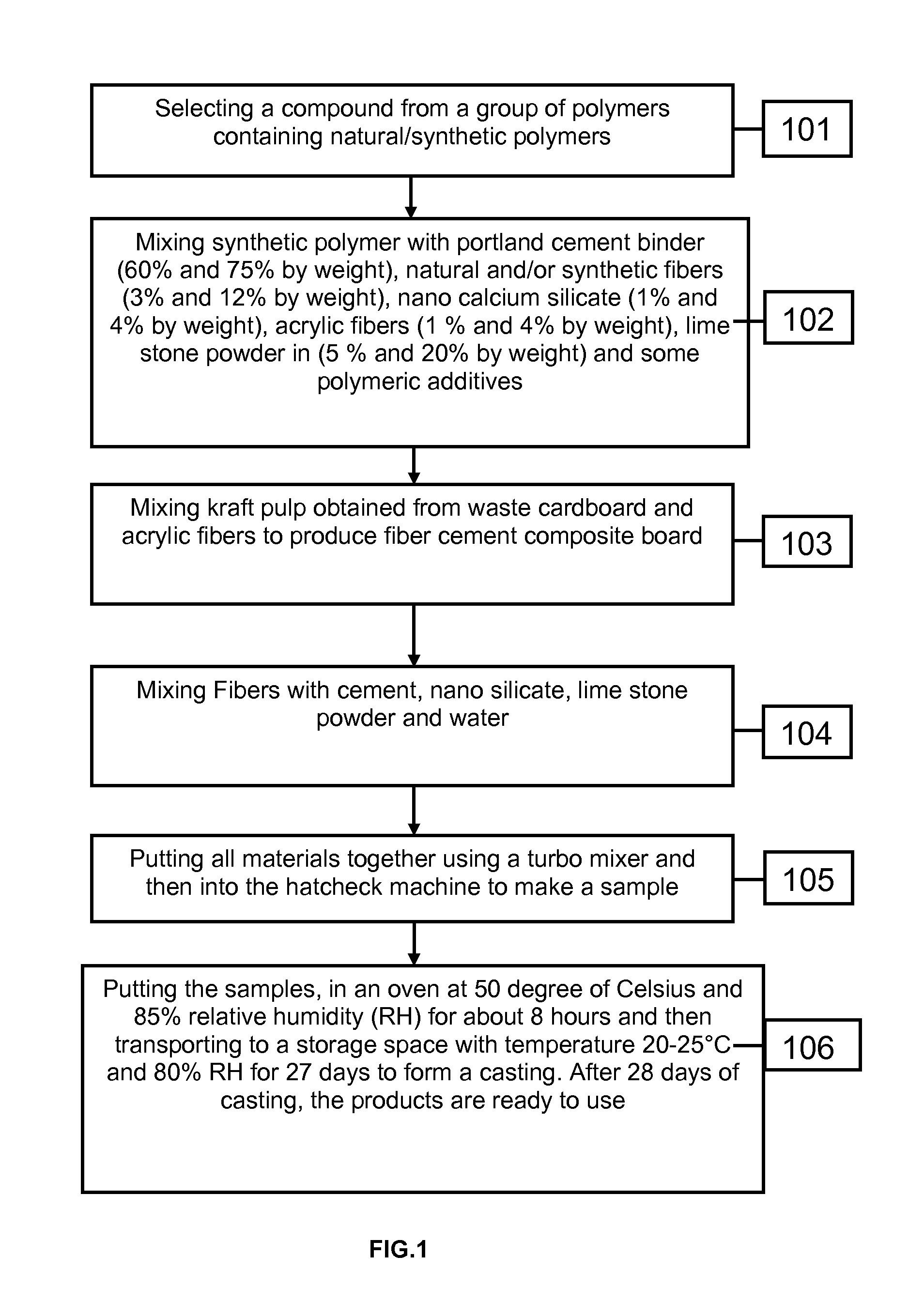Method and material for manufacturing fiber cement board
a fiber cement board and fiber cement technology, applied in the field of non-asbestos based fiber cement boards, can solve the problems of asbestos use, relatively high drainage time, and inability to manufacture other fibers
- Summary
- Abstract
- Description
- Claims
- Application Information
AI Technical Summary
Problems solved by technology
Method used
Image
Examples
Embodiment Construction
[0035]In the following detailed description, a reference is made to the accompanying drawings that form a part hereof, and in which the specific embodiments that may be practiced is shown by way of illustration. The embodiments are described in sufficient detail to enable those skilled in the art to practice the embodiments and it is to be understood that the logical, mechanical and other changes may be made without departing from the scope of the embodiments. The following detailed description is therefore not to be taken in a limiting sense.
[0036]The various embodiments herein provide a composition for a cement composite board, wherein the cement composite board is non-asbestos Fiber Cement Board (FCB).
[0037]A fiber-cement board which is capable of being formed on a Hatcheck machine consisting essentially of a Portland cement binder in the amount of between about 60% and 75% by weight, natural and / or synthetic fibers in an amount of between about 3% and 12% by weight, nano calcium...
PUM
| Property | Measurement | Unit |
|---|---|---|
| size | aaaaa | aaaaa |
| RH | aaaaa | aaaaa |
| temperature | aaaaa | aaaaa |
Abstract
Description
Claims
Application Information
 Login to View More
Login to View More - R&D
- Intellectual Property
- Life Sciences
- Materials
- Tech Scout
- Unparalleled Data Quality
- Higher Quality Content
- 60% Fewer Hallucinations
Browse by: Latest US Patents, China's latest patents, Technical Efficacy Thesaurus, Application Domain, Technology Topic, Popular Technical Reports.
© 2025 PatSnap. All rights reserved.Legal|Privacy policy|Modern Slavery Act Transparency Statement|Sitemap|About US| Contact US: help@patsnap.com



